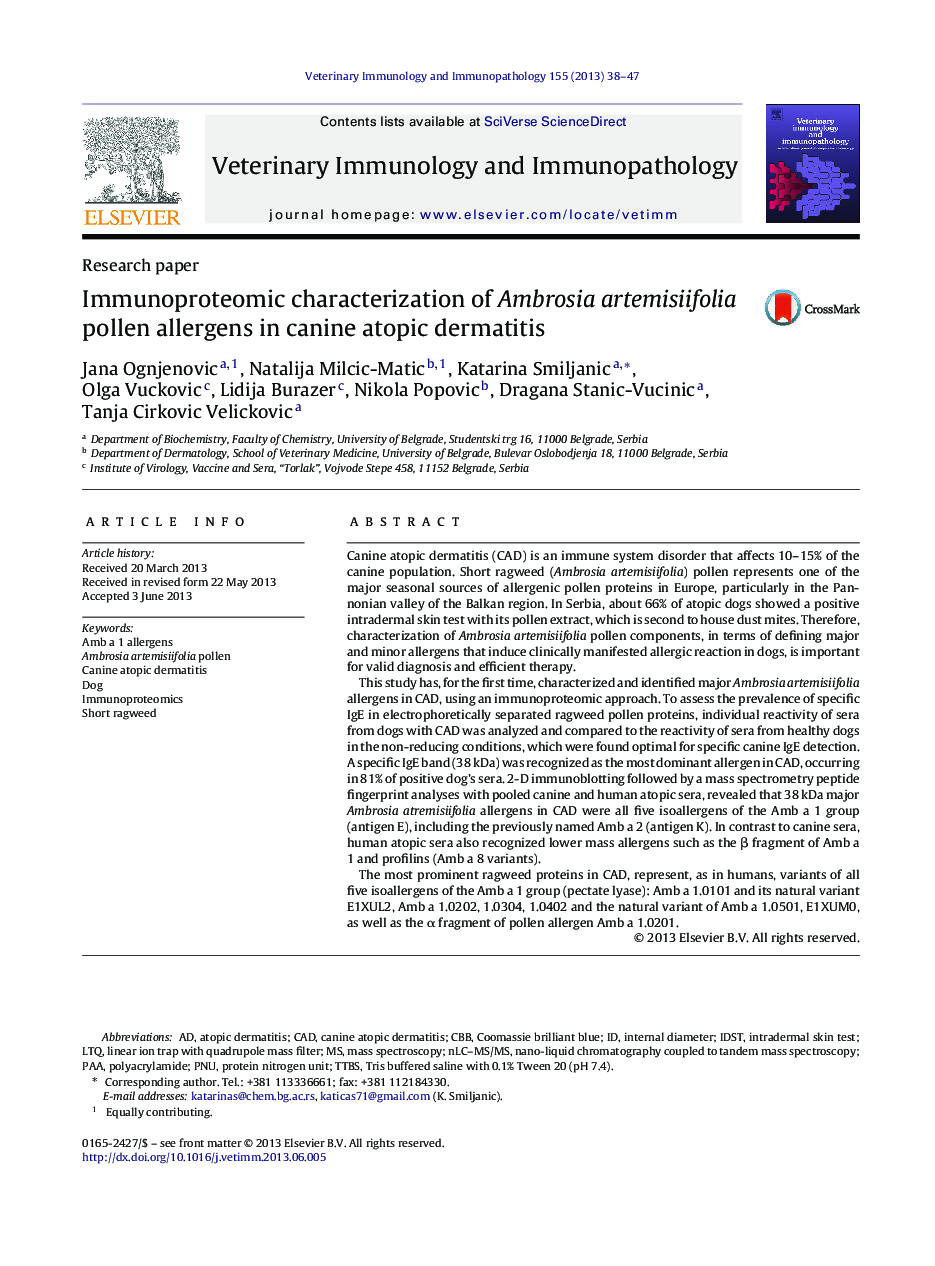| Article ID | Journal | Published Year | Pages | File Type |
|---|---|---|---|---|
| 5796880 | Veterinary Immunology and Immunopathology | 2013 | 10 Pages |
Canine atopic dermatitis (CAD) is an immune system disorder that affects 10-15% of the canine population. Short ragweed (Ambrosia artemisiifolia) pollen represents one of the major seasonal sources of allergenic pollen proteins in Europe, particularly in the Pannonian valley of the Balkan region. In Serbia, about 66% of atopic dogs showed a positive intradermal skin test with its pollen extract, which is second to house dust mites. Therefore, characterization of Ambrosia artemisiifolia pollen components, in terms of defining major and minor allergens that induce clinically manifested allergic reaction in dogs, is important for valid diagnosis and efficient therapy.This study has, for the first time, characterized and identified major Ambrosia artemisiifolia allergens in CAD, using an immunoproteomic approach. To assess the prevalence of specific IgE in electrophoretically separated ragweed pollen proteins, individual reactivity of sera from dogs with CAD was analyzed and compared to the reactivity of sera from healthy dogs in the non-reducing conditions, which were found optimal for specific canine IgE detection. A specific IgE band (38 kDa) was recognized as the most dominant allergen in CAD, occurring in 81% of positive dog's sera. 2-D immunoblotting followed by a mass spectrometry peptide fingerprint analyses with pooled canine and human atopic sera, revealed that 38 kDa major Ambrosia atremisiifolia allergens in CAD were all five isoallergens of the Amb a 1 group (antigen E), including the previously named Amb a 2 (antigen K). In contrast to canine sera, human atopic sera also recognized lower mass allergens such as the β fragment of Amb a 1 and profilins (Amb a 8 variants).The most prominent ragweed proteins in CAD, represent, as in humans, variants of all five isoallergens of the Amb a 1 group (pectate lyase): Amb a 1.0101 and its natural variant E1XUL2, Amb a 1.0202, 1.0304, 1.0402 and the natural variant of Amb a 1.0501, E1XUM0, as well as the α fragment of pollen allergen Amb a 1.0201.
